Key Takeaways
- Teal blends blue’s calmness with green’s renewal, creating a unique and versatile hue.
- Many cultures link teal with balance, vitality, and gentle energy.
- In design, teal can create refreshing spaces and solid brand identities.
- Teal can invite trust, spark creativity, and influence mood on subtle levels.
- Pairing teal with warm or cool tones can shift its emotional message.
Introduction

Ever wonder why teal stands out even in a crowded palette? This color often sparks a sense of tranquility while still feeling lively. It fuses the depth of blue with the freshness of green, producing a balanced character that many people find both pleasing and uplifting.
Although some associate teal with restful seascapes, its appeal runs deeper than basic color psychology. From ancient dyes to modern brand campaigns, teal has become a color identity that speaks to our desire for renewal and composure. It can serve as a charming accent in interior design or a bold statement in corporate branding.
Below, you’ll find a comprehensive exploration of this color’s associations, historical background, and practical uses. Each section dives into a different aspect of teal, whether it’s emotional impact, cultural significance, or design strategy. If you’re looking to adopt teal in your creative projects or just curious about its intriguing reputation, you’ll discover clear and actionable ideas here.
Exploring Teal’s Symbolism and Personality

Teal often evokes reliability, vibrancy, sincerity, and a strong sense of calmness. Many people describe it as warm yet crisp. It sparks creative ideas but remains grounded.
That grounded quality makes it appealing for those who crave both clarity and confidence in a color choice. There’s a hidden depth to teal—it looks vivid under bright light but still holds a soothing allure in dim settings.
Some link teal with optimism or quiet innovation. It can also represent tranquility and introspection. These traits make it popular for branding that needs sophistication without losing approachability.
While some might see it as a serene color, others are drawn to its subtle power. People often use it to convey a mix of energy and composure. Some see it as balanced and wise, reflecting a wisdom that comes from reflection, rather than from loud showiness.
In broad terms, teal radiates an essence that feels confident and authentic. It suggests a desire for harmony while looking stylish and refined.
Each viewer may interpret the hue a bit differently, making it a flexible choice for many creative visions. At its core, teal stands for a gentle yet lasting impact, leaving room for personal interpretation.
Teal’s Symbolic Roots
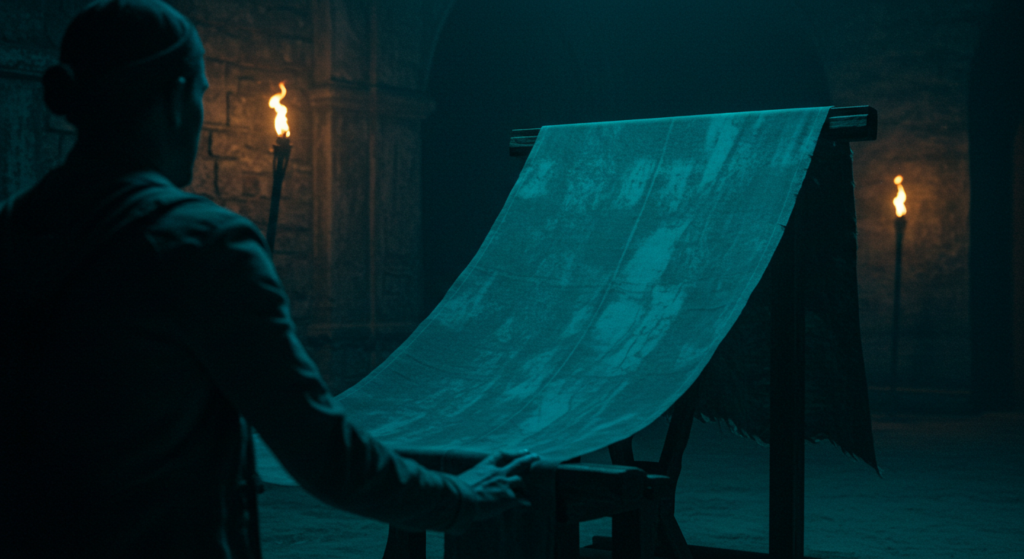
Ancient Origins
How did this color first gain attention in human history? In some parts of the globe, artisans discovered natural pigments that produced a bluish-green tint. These early dyes often came from minerals or organic matter. They found applications in fabrics, art, and ceremonial objects. This established teal as a symbol of artistry. Some groups regarded it as linked to healing rites. Others believed it protected them from negative energy.
People learned that mixing different plant extracts would generate a hue that appeared neither purely green nor purely blue. This special midpoint attracted those who wanted the peace of blue and the vibrancy of green in a single pigment. Because production could be labor-intensive, teal gained an air of exclusivity.
Teal in Different Contexts
Over time, teal began to surface in various religious and social settings. It was sometimes used in fabrics worn by figures of high standing. In other places, teal carried a link to communal gatherings. Its harmonious blend hinted at unity between people and the environment.
In sacred art, teal might highlight spiritual themes or represent renewal. Because it was a color that bridged two distinct tones, some believed it bridged the gap between earthly and heavenly matters. This sense of in-between gave teal a mystical quality that set it apart.
Reflecting on Teal’s Past
Does teal carry its ancient legacy into modern times? Many folks believe it does. As individuals and organizations study color theory, they see teal as a hue that brings a quiet sense of stability. The color’s deep roots give it timeless charm. Instead of being a passing fad, teal holds value across centuries. That longevity adds to its reputation as a color that stands strong in different designs and cultural color meanings.
Emotional Impact of Teal

Calm Yet Energizing
At first glance, teal can appear serene. It’s easy on the eyes, so it rarely shocks the senses. Yet, if you stare long enough, you may sense an undercurrent of liveliness. Why does this happen? Blue typically soothes, while green signifies life. Combining these two results in something that can both relax and stimulate the mind. That dual effect often makes teal a popular color for spaces that aim to reduce stress without putting people to sleep.
Boosting Confidence
Teal can hint at open-mindedness and gentle resolve. Some design experts say that when individuals see teal in a room, it helps them feel more assured. It might not be as aggressive as bright red or as laid-back as pastel blue. Instead, teal balances both extremes. Certain offices paint walls teal to encourage creative solutions. It can also help people feel more centered when they need to handle tough tasks.
Encouraging Reflection
Ever walk into a meditation space with bluish-green hues? Many find that color palette invites them to reflect and gather their thoughts. Teal has an interesting talent for stirring introspection without casting a gloomy vibe. It soothes the eyes yet keeps the mind engaged. As a result, it’s popular in places where individuals want to pause and think.
Teal in Cultural Color Meanings
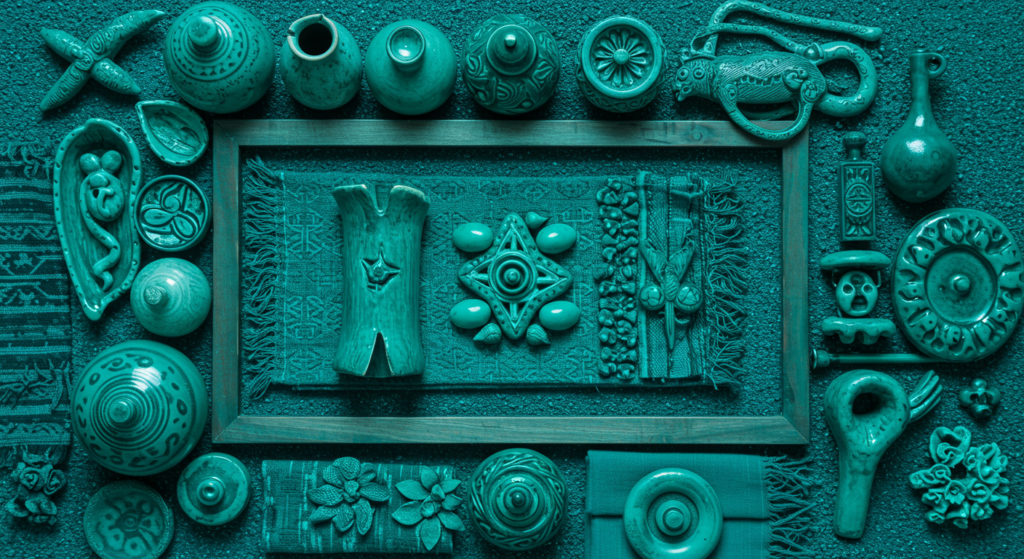
East Meets West
Are the symbolic colors the same worldwide? Not always. In certain Asian communities, bluish-green might represent good fortune or renewal. In some Western regions, teal might be used during events to show unity or community care. Because teal sits between green and blue, it can take on symbolism from both of those colors, depending on local traditions.
People in different cultural groups might define teal in ways that suit their shared stories. Some see it as a sign of fertility or natural growth. Others focus on the more aquatic nature of the color, linking it to travel or exploration across waters. This broad range of interpretations makes teal a flexible choice for global design projects.
Shared Traditions
Though the specifics differ, many communities appreciate teal for its aura of vitality. It often shows up in decorative textiles or in paintings that celebrate natural wonders. Because teal stands out against both light and dark backgrounds, it can carry a festive tone. Some ceremonies incorporate teal to represent good health or bright beginnings.
Evolving Societal Views
As societies change, so do their color associations. New generations might adopt teal as a symbol of technology or sustainability, whereas older generations may recall it as a color used in certain cultural festivities. These evolving viewpoints keep teal alive in modern culture. It adapts to fresh contexts while retaining its timeless feel.
Psychological Effects of Teal

Balancing Emotions
Color psychology research shows that many colors hold a sway over mood. Teal, with its layered undertones, has a reputation for providing balance. While it won’t solve all stress, it can foster an atmosphere that eases tension. Many see teal as a safe middle ground between warm and cool color symbolism.
Subtle Influences
Does teal manipulate behavior in strong ways? Experts usually say it’s more subtle. It might reduce minor restlessness or spark a bit of calm creativity. That can be helpful in environments that require focus, like study areas. Its subdued nature rarely overwhelms people, making it a popular choice for those who want a background color that works behind the scenes.
Practical Uses in Therapy?
Some counseling centers or wellness facilities use teal accents in their spaces. They choose it for its ability to encourage clarity. The color’s presence might help clients feel less guarded during sessions. While it isn’t a guaranteed solution for everyone, the gentle tone of teal has value for environments aimed at relaxation and balanced emotional states.
Teal’s Role in Branding and Marketing
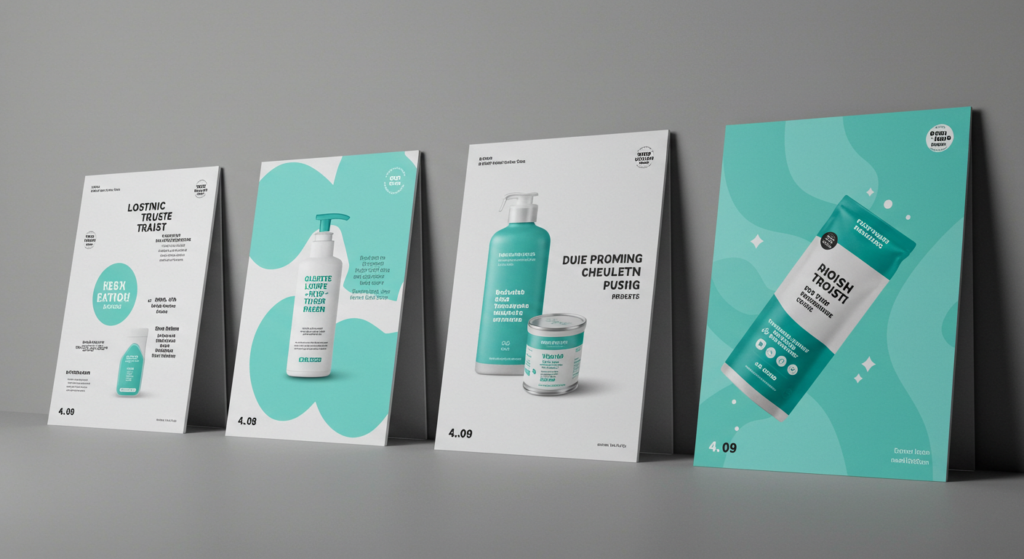
Making a Memorable Statement
Brands that want to appear fresh yet trustworthy often pick teal in their logos and branding materials. The color sets them apart from the usual red or blue options. When used well, teal can help a brand look open to ideas and also consistent. It signals that the brand stands by clarity, honesty, and forward-thinking concepts.
Connecting with Audiences
In marketing campaigns, teal can engage viewers who are tired of the typical color choices. The hue works for brands that aim to be welcoming, yet not dull. Marketers sometimes mix teal with bright orange or deep navy to grab attention. By positioning teal as a color that suggests both tranquility and energy, brands can appeal to audiences who want products that feel balanced.
Overcoming Common Missteps
Choosing teal doesn’t guarantee instant success, though. If a brand uses a dull version, it might come across as uninspired. If it clashes with other palette choices, it might muddle the message. A well-planned approach to color ensures that teal stays consistent across packaging, online channels, and physical storefronts. When done thoughtfully, that consistency builds recognition.
Teal in Design (Interior and Fashion)
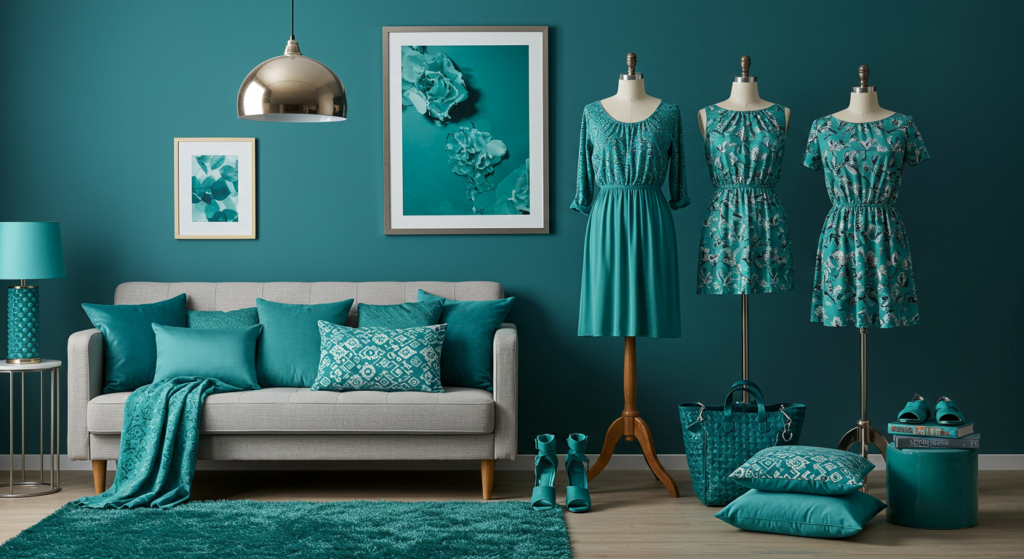
Amplifying Interior Spaces
In interior design color meanings, teal can transform a bland room into a relaxed yet striking haven. Designers might use teal accent walls to add vibrancy without overwhelming occupants. It pairs nicely with neutrals like gray or beige, so the overall look remains calm. Sometimes, small teal accessories—like pillows or decorative vases—can create a cohesive theme that sparks casual elegance.
Personal Style Choices
In fashion, teal often appears in accessories such as scarves, ties, or handbags. Wearing it can hint at a desire to stand out in subtle ways. It flatters many skin tones because it balances cool and warm elements. When paired with gold or silver jewelry, teal can exude a sense of refinement. For those who love color but shy away from bolder hues like neon green, teal provides an appealing middle ground.
Thoughtful Color Combinations
When mixing teal with other colors, it’s best to consider complementary and analogous palettes. For instance, combining teal with coral produces a lively result, while pairing it with a deeper navy can create depth. Earthy browns can add warmth. Bright yellows can stir energy. The right mix depends on the mood a designer wants to convey—so planning is key.
Teal’s Connection to Nature
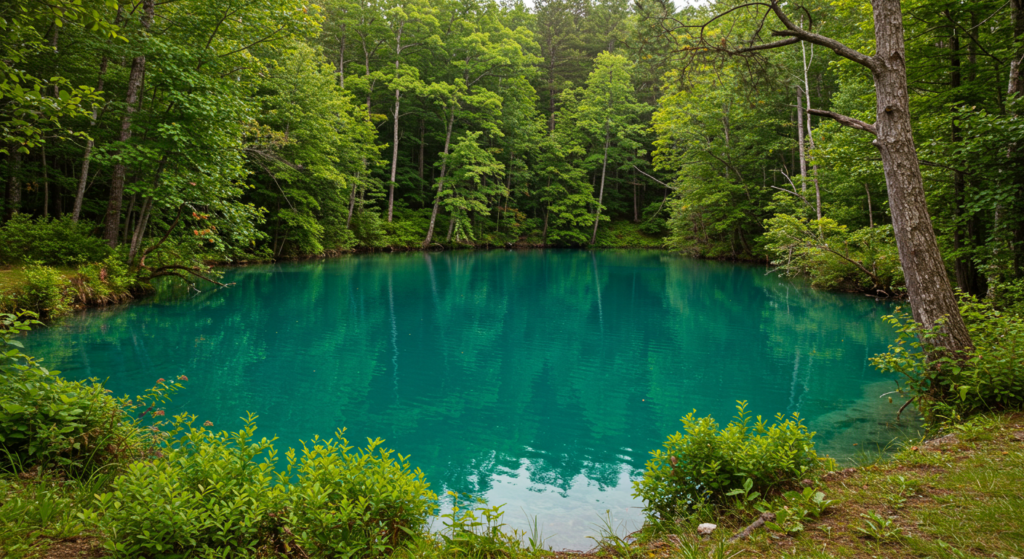
Inspiration from Seas and Skies
Some people associate teal with the sea, tropical shores, or distant mountains touched by mist. Because it mirrors natural elements, teal can evoke a sense of peace linked to wide-open spaces. Color interpretations often revolve around these natural references, reminding people of relaxation and freedom.
Impact on Environmentally Conscious Brands
Brands focusing on sustainability may choose teal to showcase their ties to nature. It’s a subtler choice than bright green, so it feels less like a cliché. This hue suggests care for the planet but also stands for thoughtful use of resources. In design color meanings, teal can signal ecological awareness in a tasteful way.
Resonating with Natural Themes
Whether it’s in packaging or on a product label, teal can strengthen messages about clean energy, water preservation, or eco-friendly living. When people see it in those contexts, they may link the product or service with responsible behavior. Some even describe teal as a color that encourages mindfulness toward the environment.
Teal in Art and Color Narratives
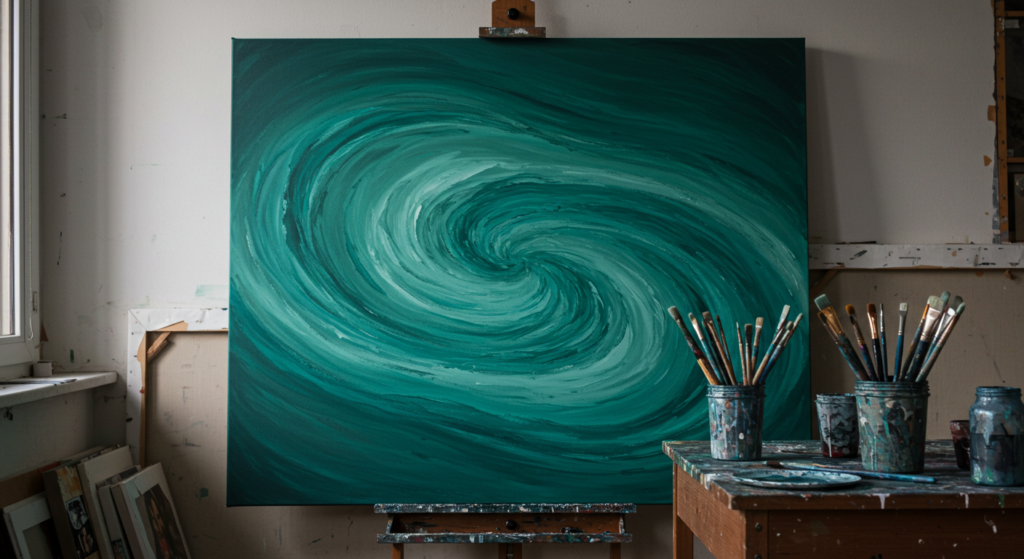
Historic Artistic Uses
Artists throughout history have embraced bluish-green pigments for murals, tapestries, and more. Some did so to capture a dreamy, ethereal quality. Others valued the color because it was less common and so added variety to their pieces. In older art, teal sometimes signified special characters or scenes tied to water or mythical life.
Modern Creative Explorations
Contemporary artists treat teal as a versatile tool for storytelling. It can act as an accent or as the main feature. Because it sits between warm color symbolism and cool color symbolism, it can convey more complexity than a straightforward red or blue. In mixed-media projects, teal often pops against neutral backgrounds, grabbing the viewer’s attention without being too flashy.
Telling Stories Through Teal
Can teal form a narrative all on its own? Many believe it can. Its dual nature—calming yet vibrant—can illustrate themes of personal growth, reflection, or hidden optimism. Artists use it to shape moods or highlight key elements in a piece. When placed next to dark charcoal or bright white, teal can communicate the idea of hope rising from stillness.
Teal for Emotional Branding
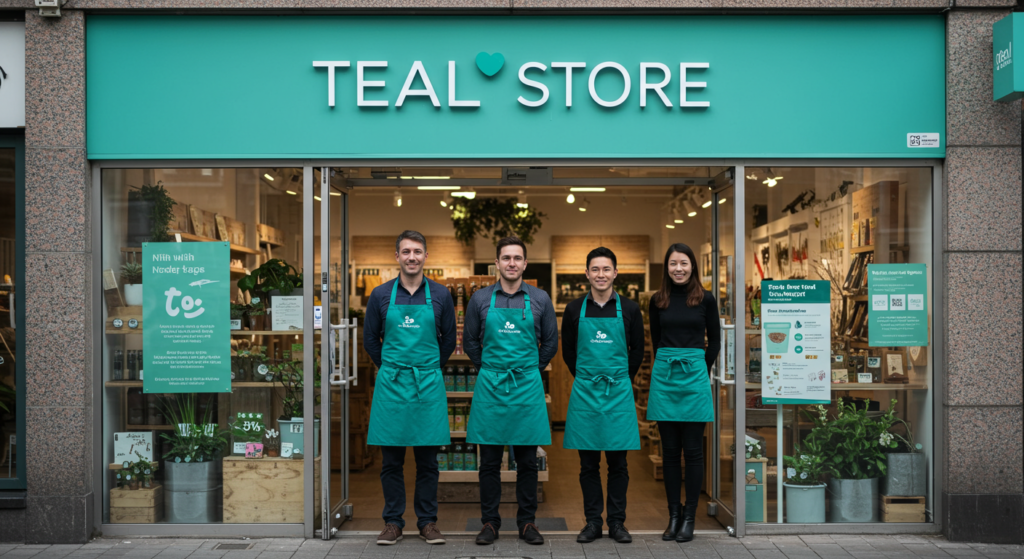
Evoking Trust
Marketing specialists often talk about emotional branding, where colors become cues for certain feelings. Teal can elicit a sense of trust because it borrows the stability of blue and the growth elements of green. People who see teal-based packaging may assume the brand is reliable and safe. This can benefit businesses that want loyal clients who feel relaxed in their decision-making.
Bringing Fresh Energy
While teal does soothe, it can also add a little spark. Its subtle brightness might attract energetic customers who still value a calm approach. A brand that uses teal can suggest progress but in a measured way. This balance of steady reassurance and gentle momentum can help form emotional bonds with customers.
Crafting Lasting Impressions
People tend to recall a color if it resonates with their feelings. By anchoring a brand identity around teal, companies can place themselves in consumers’ minds as approachable and modern. The color stands out in a market full of bold reds or classic blues. Yet it doesn’t come across as flashy. The emotional color meanings it brings—like serenity and understated enthusiasm—can help that brand leave a memorable impact.
Teal’s Role in Color Palette Meanings

Pairing with Warm Tones
When teal meets warm shades like peach, saffron, or soft pink, the final vibe can feel vibrant yet cozy. Warm tones highlight the green side of teal, showcasing its uplifting traits. This combination might be used in hospitality settings or social media graphics to create inviting, playful energy.
Pairing with Cool Tones
On the other hand, combining teal with cooler colors such as lilac or slate gray leans into the calm part of its identity. This pairing may work well for yoga studios or relaxation apps. It emphasizes teal’s tranquil side while maintaining a sophisticated look.
Harmonizing in Monochrome Schemes
Some designers prefer to work within a monochrome palette by using different shades of teal along with other bluish-greens. This creates a smooth gradient effect. The resulting look can feel polished and dreamy. Monochrome schemes often fit minimalist styles while still offering a bit of dimensional variety.
Teal in Visual Identity

Building Recognition
In visual identity, color is one of the first cues people notice. Using teal consistently across logos, product packaging, and websites can help a brand stick in someone’s memory. The color feels distinct enough to stand out, but not so unusual that it alienates viewers.
Influencing Consumer Decisions
Color associations can shape whether consumers see a brand as affordable, luxurious, or middle-of-the-road. Teal often suggests fair pricing combined with quality. It aligns with practical sophistication. That’s why it appeals to companies that want to project an image of trustworthiness, care for detail, and approachability.
Standing Out from Competitors
Plenty of businesses pick strong primary colors for their brand identities. Teal offers an alternative that still feels recognizable. It’s often seen as a sophisticated color choice that doesn’t shout. This can help a company differentiate itself in a crowded market. By weaving teal into social media posts, presentations, and storefronts, organizations maintain a clear voice that feels cohesive and unique.
Warm or Cool? Teal’s Temperature
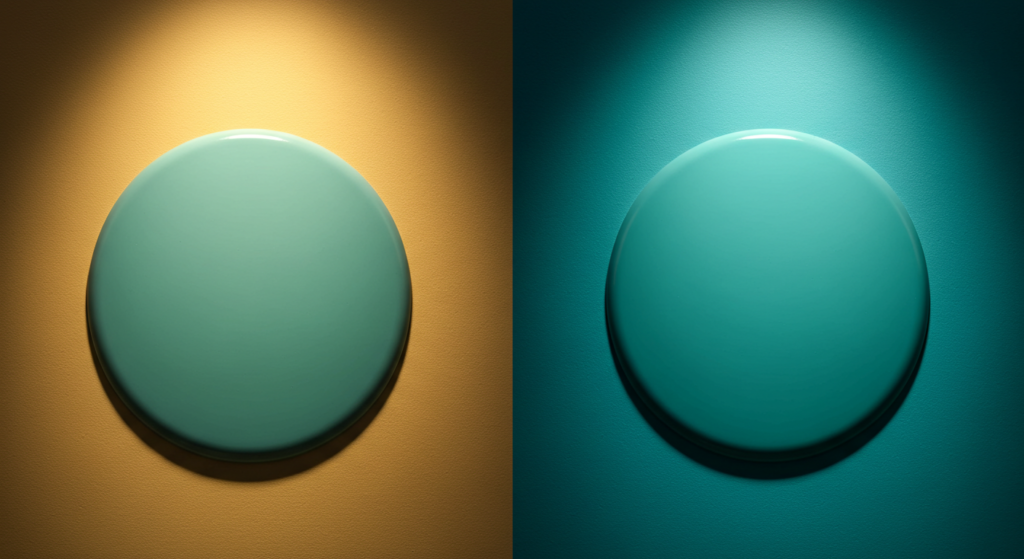
Finding the Middle Ground
Some call teal warm. Others call it cool. Which is right? It depends on the ratio of blue to green. Certain teal variations tilt more toward blue, giving a cooler vibe. Others lean green, adding warmth. People who desire a color that adapts to diverse spaces love teal for this exact reason. It can fit warm or cool palettes, depending on how it’s mixed.
Shifts in Perception
Different lighting can change how teal looks. Under natural sunlight, it might appear more vibrant and fresh. Under warm indoor lighting, it might lean slightly green or feel cozier. Because of this shifting nature, some interior designers experiment with paint swatches in various lighting conditions before finalizing a teal-based plan.
Adapting to Context
The color temperature of teal can influence how people react to it. If a designer wants a calming corner in a cafe, a cooler teal might work best. If the goal is to add a playful accent in a family living room, a warmer teal version might be better. This adaptability makes teal valuable for designers who need a color that can flex to different needs.
Color Trends and Teal

Teal as a Timeless Pick
Fashion experts sometimes label teal a “trend-proof” color. It’s not often the hottest shade of the season, but it rarely goes out of style. Because it stands somewhere between two major color groups, it can slip into fresh palettes without looking dated. Many believe teal will stick around for years because of its proven versatility.
Modern Takes on Teal
Contemporary styles often merge teal with unexpected accents. Designers might pair teal with metallics like rose gold or copper. This creates a sleek, modern twist. Web designers sometimes highlight important buttons in teal, which can guide user interaction on digital pages. These choices reflect teal’s power to adapt to new looks while retaining its core appeal.
Emerging Global Preferences
Across the globe, color preferences shift as cultural tastes change. Some audiences may favor minimalism while others enjoy bolder statements. Teal can satisfy both. It can act as an accent in a minimalist layout or serve as the star in a bright, eclectic theme. Because of that, teal consistently ranks high on shortlists of recommended color choices for emerging design trends.
Teal’s Practical Applications

Everyday Uses
How can someone bring teal into daily life? Simple touches, like a teal mug or teal pillow, can add a breath of freshness. Even small items—like phone cases or desk organizers—can feature this color to help maintain an uplifting environment. These minor elements can mix function with style.
Professional Settings
From corporate offices to healthcare clinics, teal often works well as an accent that calms without distracting. It can show up in reception areas, meeting rooms, or corporate branding. Because teal signals balance and sincerity, it might help foster better interactions. People entering a business space colored in teal tones may feel less anxious than if the walls were stark white or neon bright.
Future Opportunities
As technology evolves, new lighting systems and digital interfaces will offer further ways to showcase teal. Designers might experiment with dynamic color schemes that shift from bright teal to deep teal throughout the day. Such changes can influence mood in real time, supporting better focus or relaxation. Teal has the potential to be part of these innovations, reminding users of nature, balance, and thoughtful creativity.
Conclusion

Teal remains a color that harmonizes many qualities—peace and energy, warmth and coolness, tradition and modern style.
Its storied past and wide cultural acceptance have made it a dependable choice for homes, brands, and artistic ventures. People appreciate its unique ability to soothe the senses while keeping thoughts active.
By exploring how teal sparks emotional responses, influences design choices, and shapes marketing messages, we see that it holds a strong place in both personal creativity and commercial identity.
This hue endures because it bridges elements that people crave: comfort, authenticity, and a bit of spark. Whether you plan to use it for a small accent or a main theme, teal can open the door to a visual identity that stands the test of time.
Summary Table

| Aspect | Key Insight | Practical Tip |
|---|---|---|
| Symbolic Roots | Has historic ties to healing and unity. | Draw on ancient links for timeless design cues. |
| Emotional Impact | Balances calm and slight energy. | Use in spaces needing relaxation without boredom. |
| Cultural Color Meanings | Linked to renewal in many areas of the globe. | Research local views when applying teal in global branding. |
| Psychological Effects | Can subtly enhance focus and reduce stress. | Incorporate teal accents for calm creativity. |
| Branding & Marketing | Helps a brand appear trustworthy and modern. | Pair with complementary hues for standout logos. |
| Interior & Fashion Design | Adds tasteful flair to rooms and wardrobes. | Test paint or fabric swatches in varied lighting. |
| Connection to Nature | Reflects aquatic and forest themes. | Perfect for eco-friendly messages or coastal-style décor. |
| Art & Color Narratives | Offers an in-between tone for layered storytelling. | Use as a highlight or background for dramatic effect. |
| Emotional Branding | Evokes trust, fresh energy, and gentle optimism. | Emphasize teal in packaging to foster brand loyalty. |
| Role in Color Palettes | Blends with both warm and cool schemes. | Try teal-coral combos for liveliness or teal-navy for depth. |
| Visual Identity | Builds recognition while feeling unique. | Maintain a consistent teal shade across all brand platforms. |
| Warm or Cool Temperature | Shifts based on lighting and ratio of blue to green. | Check lighting conditions to ensure the desired look. |
| Color Trends | Timeless and flexible, rarely out of style. | Combine with on-trend metallics or neutrals to keep it current. |
| Practical Applications | Works in daily items, offices, and future tech. | Start small, like adding teal accessories or accent walls for an appealing shift. |
FAQ

1) Is teal considered a warm or cool color?
It can be both, depending on the proportion of green and blue. Some teal shades appear cooler, others appear warmer. Lighting also has a big impact on how the color is perceived.
2) Why does teal often feel calming?
Teal combines blue’s soothing influence with green’s freshness, giving it a balanced effect on mood. Its subtle vibrancy can relax people without feeling dull.
3) How can I use teal in my home?
Consider painting one accent wall with teal or adding smaller accessories. Combine teal with neutral tones to keep the look crisp. Check how the color changes under different lighting before deciding on large areas.
4) Will teal make my brand stand out?
Yes, because many brands stick to primary colors. Teal offers a distinctive touch that feels modern yet welcoming. When used consistently, it can help your brand stay memorable.
5) Does teal have the same meaning in all cultures?
Not exactly. Some link it to health and renewal. Others see it as a sign of luck or unity. It’s best to do a bit of research if you’re marketing across different regions.
6) Is teal only suitable for coastal or nature-focused themes?
No. While it pairs well with nature themes, teal can also represent technology, progression, or balanced living. The key is choosing the right shade and complementary colors to match your intended message.
7) Can teal be used in formal events or attire?
Absolutely. Teal can add sophistication to formal wear. Items like ties, pocket squares, dresses, or jewelry can bring a refined pop of color without looking flashy.
8) How do I pick the right teal shade for my design?
Examine the ratio of green to blue. A bluer teal feels cooler. A greener teal leans warmer. If you want a soothing vibe, look for a balanced shade that sits squarely between blue and green.
9) Are there any scientific studies on color teal?
While broad color psychology research exists, specific studies on teal are less common. Yet many general findings on bluish-green tones support the idea that it can reduce tension and promote mental clarity.
10) Will teal clash with other bold colors?
Not necessarily. It pairs well with vibrant shades like orange, magenta, or sunny yellow. The key is balancing the intensity so neither color overwhelms the other.
11) Is teal good for business branding if we want a dynamic image?
Yes. Teal can show energy in a measured way. You can add small orange or red accents if you need more punch. This approach keeps teal’s steady vibe while introducing dynamic elements.
12) Does teal work in minimalist designs?
Yes, if it’s used as a subtle accent or in a monochrome approach. A single teal element in a mostly neutral layout can draw attention while maintaining a clean look.
13) Why do some people call teal “trend-proof”?
Teal rarely becomes an extreme fad color. Because it sits between two popular color families, it stays relevant across changing style waves. Designers often call it a versatile staple.
14) How does teal compare to turquoise or aqua?
They are all bluish-green, but turquoise and aqua often appear brighter or lighter than teal. Teal tends to have a deeper or more muted tone, which gives it a sophisticated edge in many designs.
Enjoy experimenting with teal! This hue can influence mood, trigger curiosity, and enrich visual identity without feeling overused. By understanding the meaning behind this color, you can harness its dual calm-and-energetic nature to boost your personal or professional projects.

Marcella Raskin is a talented writer and editor with a deep passion for the dynamic realm of clothing colors and patterns. Armed with a strong background in Journalism, she crafts engaging content that empowers readers to select the perfect shades for their outfits. Her pieces provide an in-depth exploration of color trends and expertly curated fashion advice. Beyond her work, Marcella loves discovering new places, connecting with local designers, and advocating for sustainable fashion choices. She is devoted to helping individuals make enlightened color choices for their attire.
Reviewed By: Joanna Perez and Anna West
Edited By: Lenny Terra
Fact Checked By: Matthew Mansour
Photos Taken or Curated By: Matthew Mansour
